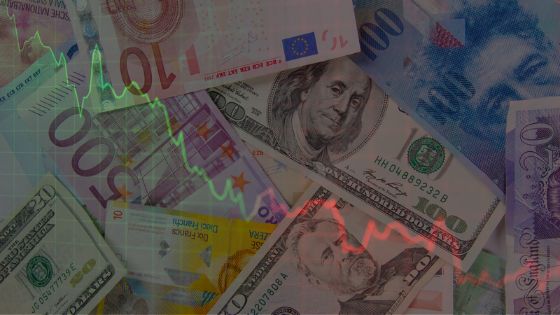Article
Global Currency Disruption: What does it mean for investors?

Thus far 2023 has delivered blow after blow to the Dollar; rising inflation, interest rates and national debt have sparked concerns amongst financial academics with regard to the stability and longevity of the American currency. To add fuel to the fire, the collapse of Silicon Valley Bank in March prompted the Dollar to tank further causing some to speculate whether a collapse of the US Dollar could be on the table. While the collapse of the world currency is incredibly unlikely, it is always wise for investors to be aware of any threats that could impact their finances, even if they do seem like a minute prospect.
While the US Dollar bleeds in the water, the proverbial sharks are circling, sensing a potential opportunity. It was announced this week that Russia is considering launching a new global currency in collaboration with Brazil, China, India and South Africa – a coalition that has been coined BRICS by financial analysts. This new currency is expected to be announced at the upcoming BRICS summit in August later this year. Although this global currency is only in its fledgling stages, it has piqued interest from some major economic players including Saudi Arabia, Indonesia and Argentina. It has been claimed that the proposed currency could be backed by gold or other commodities, which has not been commonly used in western economies since the 1930s when the Gold Standard’s flaws were revealed in the aftermath of the First World War. A major global currency backed by gold or other commodities could result in better performance and trust in alternative assets such as gold and art as stores of value.
While turbulence for the US Dollar may have given BRICS nations an opportunity to launch a new global currency, their motivation lies in growing discontent at the United States’ treatment of nations such as Russia and China. Russia has already opted to use the Chinese Renminbi in payments between Russia and countries in Asia, Africa and Latin America in a bid to further displace the Dollar. Russia has garnered this vendetta against the US Dollar in light of a series of sanctions enforced by America against Russia in response to the latter’s invasion of Ukraine. Chinese President, Xi Jinping has also expressed grievances with the USA’s powerful grip on the global economy, accusing America of blocking China’s development resulting in a reduction in the country’s economic growth to 3%.
While many would debate how successful a global trading currency launched by countries that are often ostracised on the world stage it is worth noting that a 2022 publication from the Centre for Economic Policy Research detailed the rise of the Chinese Renminbi which could lead to it attaining a role as a global reserve currency. China’s position as a global economic superpower is undeniable, as the second largest global economy China has the means to successfully launch a world currency. A European Central Bank report explained how the Chinese Renminbi was being increasingly used in trade invoicing and that there is a continued improvement in the currency’s international position as a whole. The report also stated that only a handful of factors weighed down the Renminbi, most notably China’s lack of transparency surrounding its capital and financial accounts. In light of this, it is worth noting that Asia is the fastest-growing global economic region with China forecasted to experience 5.8% growth in GDP in 2023, compared to a predicted 3.1% expected growth in the UK’s GDP. One of the driving forces behind Asia’s exponential growth is the continent’s commitment to innovation, reports suggest that Asia is responsible for 87% of global growth in patents filed.
Another area of Asia’s economy that is escalating rapidly is the art market – in 2000 China represented just 1% of the global art market by 2021, Asian countries made up 40% of the art market. This is partly due to a change in the demographic of art buyers in Asia, Sotheby’s and Christie’s both state that the majority of their buyers in Asia are millennials who are more open to buying Western artworks than their predecessors which has led to the massive growth seen in Asian art markets. Many western galleries are showing interest in the opportunities provided by the Asian art market, the Centre Pompidou has confirmed plans to open a contemporary art museum in Seoul, South Korea. This growth in Asia is beneficial to art collectors and investors around the world as the increased demand for artwork will likely boost the performance of the market as a whole.
The Asian impact on the art market is just one of a variety of factors that make art a smart investment for 2023. Many of the characteristics of art as an asset class allow art to attain status as an effective store of value which is to say that art offers collectors and investors a means to hold their wealth and retain value while mitigating the susceptibility to suffer due to rising inflation or other volatile actions that might impact wealth stored in stocks or savings accounts. Another benefit to art as a tangible asset is that art can feasibly be sold in any currency, which can protect investors in the event of any major disruption in global currency.
Trust De Pointe to guide you through the complexities of the alternative investment market. Subscribe today to learn more about our services and how we can help you achieve your investment objectives.
